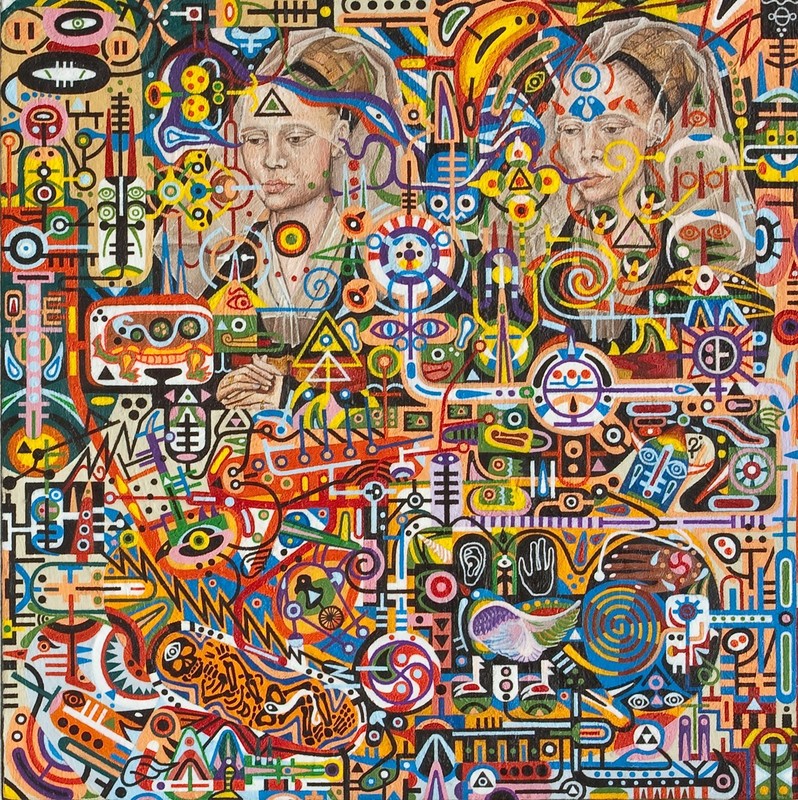Some people like to make the claim… “DMT is everywhere!”.
While this not might be technically 100% true, the ubiquitousness with which it occurs cannot be denied. Hundreds of plants and every mammal tested thus far have showcased varying levels of “The Spirit Molecule” residing within them. Being that dimethyltryptamine (DMT) is still classified as a Schedule I substance alongside heroin and methamphetamines makes it all the more perplexing.
When the general public hears the word “Ayahuasca”, it generally tends to carry with it connotations of exotic plants found within the Amazonian jungle. This shamanic brew is comprised of plants found within this region that contain DMT and monoamine oxidase inhibitors (MAOIs).
In 2013, the Journal of Agricultural & Food Chemistry published a study regarding the occurrence and distribution of tryptamines in citrus plants. There were 6 different types of citrus plants utilized in the study including Bergamot, Lemon, Orange, Mandarin, Chinotto, and Citron. The results of the study found trace amounts of DMT in all parts of the fruit with the highest levels in the leaves and seeds.


Based on the result, it makes one question what the levels of DMT might be in other parts of these citrus trees normally utilized for DMT extraction such as the bark and roots of the plant. These parts were not utilized in the citrus plant study but it is clear that the seeds of each fruit contain the highest levels of DMT. Table 3 points to the Chinotto (Sour/Bitter Orange) plant as having the highest levels of DMT compared to the rest with the seeds of this fruit likely being highest amongst them all.
Who would have thought that even a plain old orange would contain DMT?
Shuffling further down the rabbit hole… a 2014 study published in the publication International Journal of Alzheimer’s Disease would compare the monoamine oxidase inhibitory (MAOI) properties and Butyrylcholinesterase activity of green tea and citrus peels (grapefruit, orange, & shaddock). The green tea and citrus peels were sun-dried for 7 days, ground to fine powder, boiled in water for 5 minutes, and then filtered.
According to the results of the study, orange peels had the highest monoamine oxidase inhibitory ability, while green tea had the lowest.
(Figure 1. From the 2014 Study)
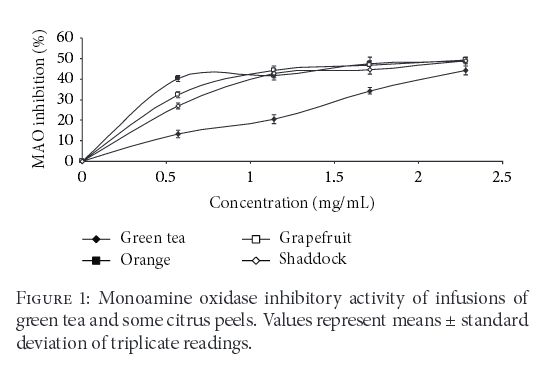
Who would have thought that by peeling an orange and discarding the seeds, you are essentially tossing some potential underlying components of the vaunted Ayahuasca brew?
It would be an interesting follow up study to test the levels of both MAOI and DMT level variations in an orange (peel & seeds) as the fruit matures. There is the potentiality that the fruit gets either less potent as it becomes increasingly sweeter or actually gets more potent. There’s only one way to find out and science is the key I suppose. According to a 2010 study in the Journal of Agriculture & Food Chemistry, the flavonoid composition and antioxidant activity of a Chinotto orange varied based in ripeness of the fruit. The less ripe the fruit (more green), the more potent the the antioxidant scavenging capability. I have a hunch that you’d likely see consistency across much of the fruit kingdom in terms of concentrated DMT in the seeds, and MAOI properties in the peels if they were all put to laboratory scrutiny.
You could always just have a person pick a few chinotto oranges (or any citrus fruit) straight from a tree and eat a few peels, seeds, and all… then sit back and see if anything happens.
(It’s been cited throughout the interwebs that Limonene (a compound found in citrus peels) can be utilized to extract DMT from the root bark of trees. I have no knowledge of the extraction process but simply found it to be interesting complementary information.)
According to UCLA Medical Center, the Pituitary Gland (residing at the base of the brain behind the eyes) has the potentiality to experience adenomas: slow growing tumors on the gland. Some of these tumors are labeled “functioning” adenomas due to their tendency to produce an excess of particular hormones (growth hormone, cortisol, prolactin). Any tumors that do not secrete active hormones are labeled “clinically nonfunctioning adenomas”.
In the case of an excess production of growth hormone (GH) due to a pituitary tumor, cases of gigantism and acromelagy have occurred. The symptoms of this disease include a large body stature compared to peers with significant enlargement of the hands and feet. Excess production of cortisol leads to excessive weight gain and easier bruising of the skin. Increased prolactin levels lead to loss of menstrual cycle in women and the potential to produce breast milk in both genders.
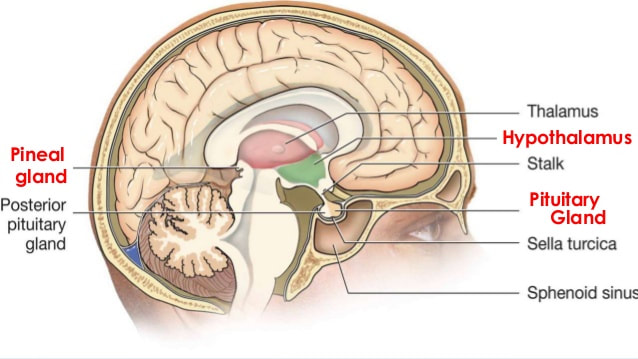
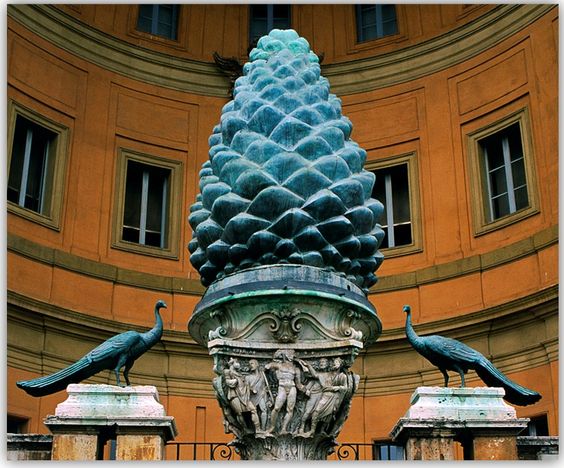
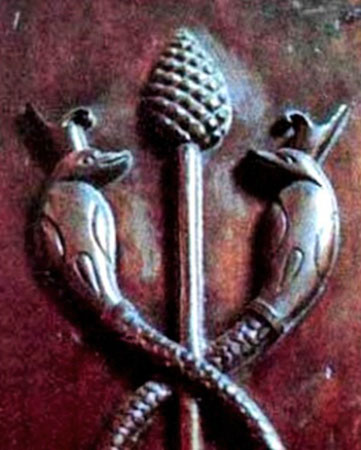

The discussion rumbles on as supporters of the DMT/Pineal Gland origin theory point to the mysterious shape and location of the gland as likely being one of the main points of origin for “The Spirit Molecule” within the body. References to famous french philosopher Rene Descartes claiming that the pineal gland is “the seat of the soul” are also cited in support of this perspective
Detractors of the pineal gland/DMT origin theory will claim that there simply is no proof as it pertains to humans. It’s apparent that the 2013 study verifying DMT & DMT-forming enzymes in the pineal gland of live rats was not enough to quell the discussion. Even the lack of an alternative biochemical theory behind “dream sleep” has done little to dissuade those that claim the “science-minded hard stance”. I suppose it could be considered a noble perspective to abide by such a strict and rigid thought process.
One of the interesting pieces of artwork(s) that I’ve come across in regards to DMT are the paintings inspired by visions during Ayahuasca ceremonies. Here is a painting by Pablo Amaringo:
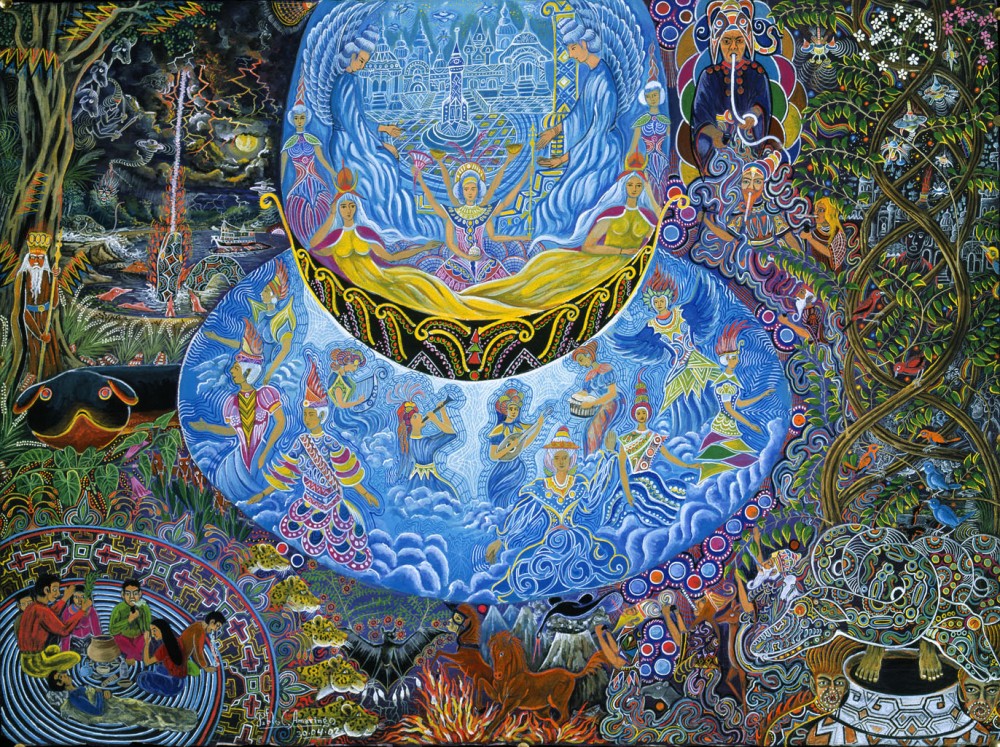
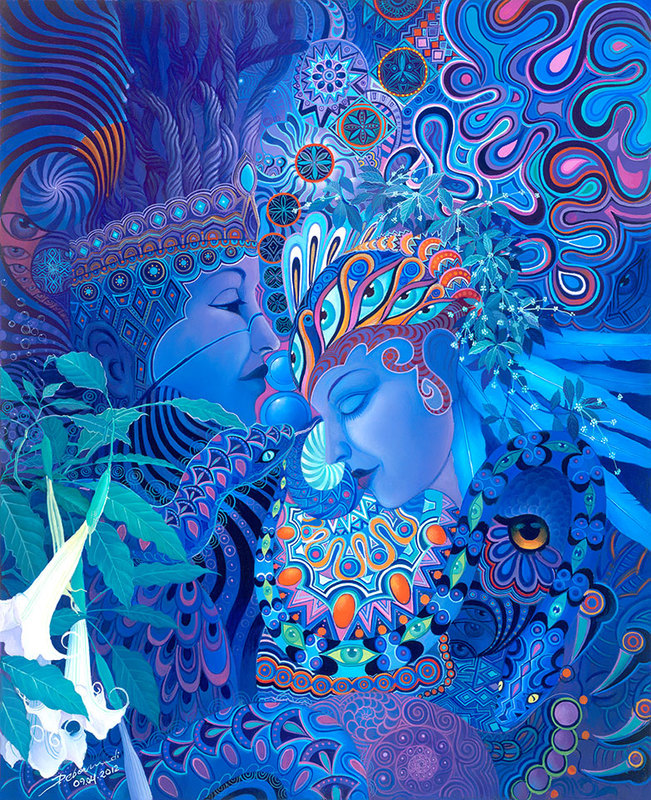
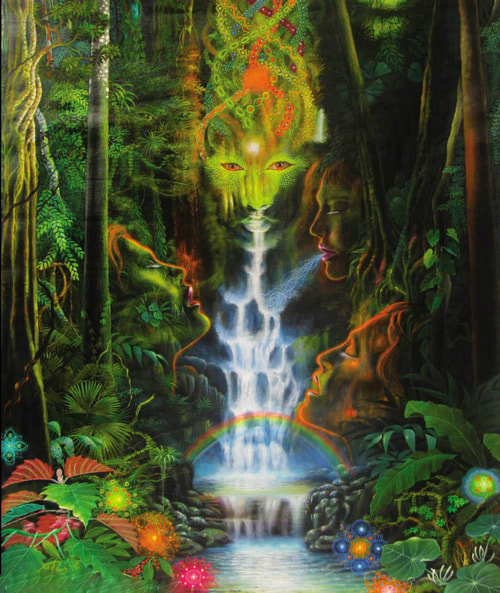
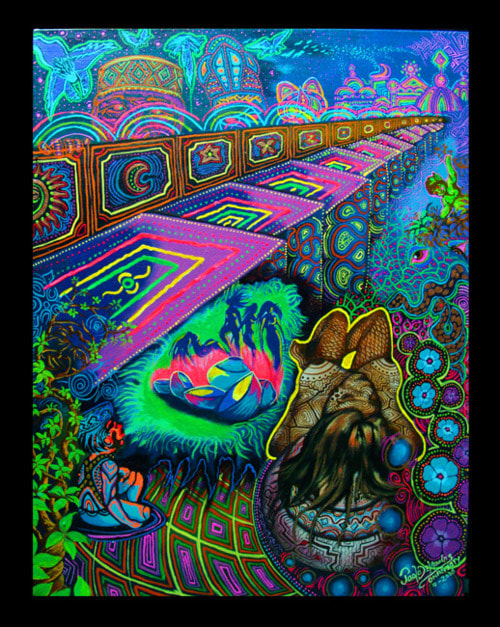
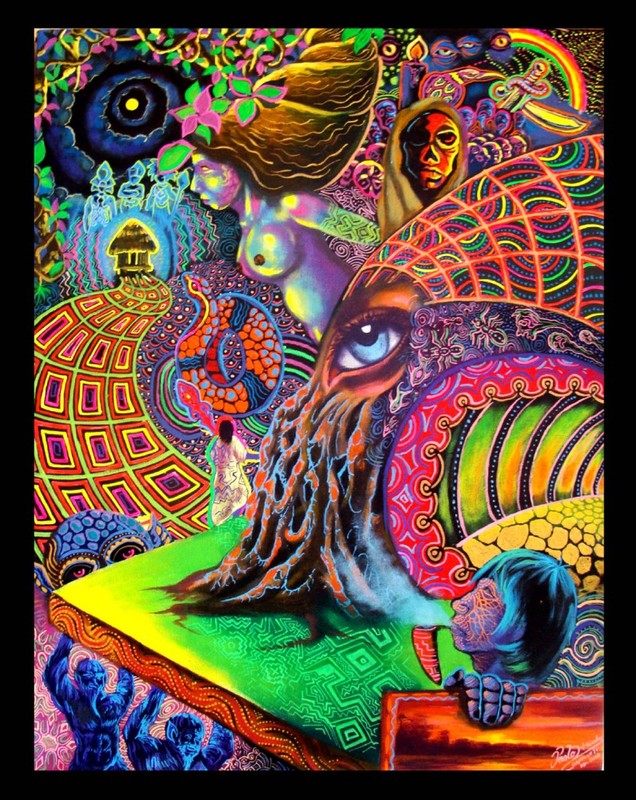
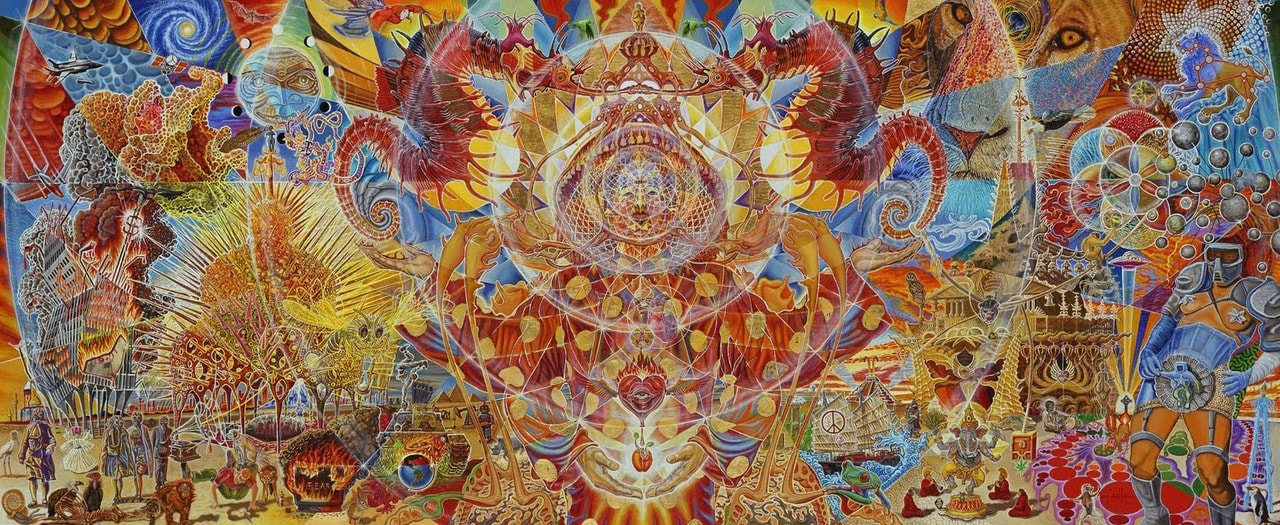

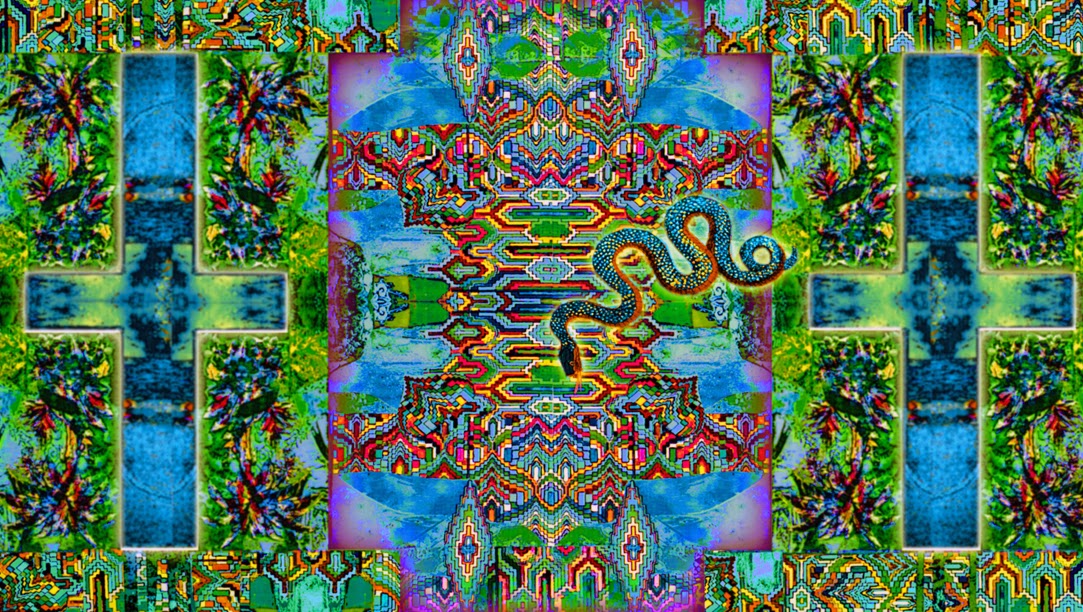

In 2014, there was the case of the artist Shawn Thornton, who had unknowingly developed a cancerous tumor on his pineal gland. While attending art school his paintings subsequently developed a style that some would characterize as similar to DMT-like visionary experiences.

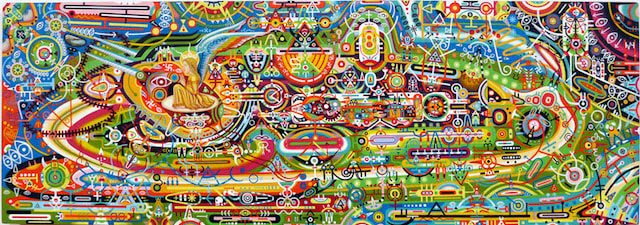
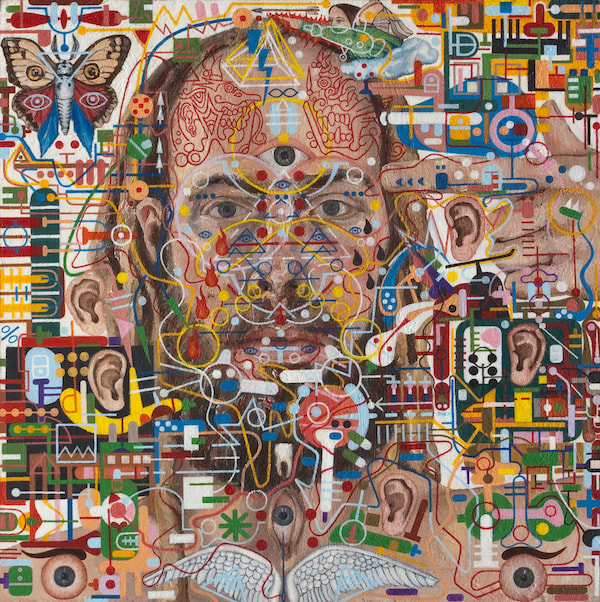
This is a post from Shawn Thornton (ginkgo1977) on Reddit:
“I suffered from a slow growing cancer in my pineal gland while I attended art school and during subsequent years while my paintings developed with an underlined mythology that alluded directly to the pineal years before I even know of its existence.
I think I’d work myself into a frenzy for a while and yes, when I would fall lie down in bed I’d have something like a manic episode that was very lucid and visionary. That still applies to this day, but I try to control it better so I don’t get sick again.
I’ve had a lot of truly mystical and otherworldly experiences as a result of my history and battle with brain cancer and I’m really drawn to things that resonate with a certain powerful energy, and I’m always honing in on that more and more. whether consciously or subconsciously
I treat depression with mushrooms. Haven’t done DMT ‘intentionally’. Man made chemicals are a thing of the past for me, as I’m really sensitive.
While melatonin and serotonin have both been verified to adjust their levels based on circadian rhythm, it is melatonin that has been associated with periods of sleep and indirectly “dream states”. However, even after administering melatonin in extremely large doses psychoactive potentiality was never verified. Serotonin is usually produced in significant amounts during the day and has yet to be identified as a hallucinogenic compound.
This turns our speculation to the pineal gland tumor of Shawn Thornton and it’s subsequent effects on his artwork. It’s been established that physical manifestations such as gigantism can occur from pituitary tumors leading to excess secretion of growth hormone. Since both melatonin and serotonin wouldn’t seem to be the culprits for inducing such visions/images experienced by Mr. Thornton, we might presume to “wildly” speculate that the culprit could be DMT (or to a lesser extent Pinoline).
Perhaps a tumor consisting of cells that overproduce DMT led to his visions? While his artwork wouldn’t be considered to be exactly the same style as that of the ayahuasca or exogenous DMT inspired drawings, none of them would be considered to be exactly the same style for that matter. However, the fact that we have yet to identify an alternative endogenous psychedelic compound to DMT, it would appear logical to presume that this might have occurred in Shawn Thornton’s case
Is this a scientific fact in the strictest of senses
Obviously not
Is this a practical hypothesis when analyzing the situation from a wide scope perspective
Yes and No
Yes from the perspective of taking in the entire body of data and analysis
No from the perspective of “we haven’t dissected the pineal gland of a living human to verify DMT’s presence.
I believe it’s important to understand the formal definition of the word “science”
“The intellectual and practical activity encompassing the systematic study of the structure and behavior of the physical and natural world through observation and experiment.
Sometimes it feels as though an excessive amount of weight is placed upon the “experiment” part of the definition as some “science fanatics” are incapable of accepting well grounded observations. In any case, the pineal gland/DMT discussion will continue in forums and social media networks across the world as both sides make their case for absolute truths
If I were a betting man… I’d be 99.99% comfortable betting that there is a direct relationship between the pineal gland and endogenous DMT formation. However, I definitely don’t believe that this is the only place in the body in which DMT is synthesized. This would be based on utilizing intellectual and practical activity encompassing the systematic study of the structure and behavior of the physical and natural world through observation
Experiment will take place at a later time
DMT Quest is a non-profit 501(c)3 dedicated to raising awareness and funds for endogenous DMT Research. This specific field of psychedelic research has been underfunded for many decades now. It’s time to take our understanding of human physiology, abilities, and perception to the next level. E-mail me at jchavez@dmtquest.org with any comments or questions. You can also follow us at Facebook, Instagram, or Twitter.

